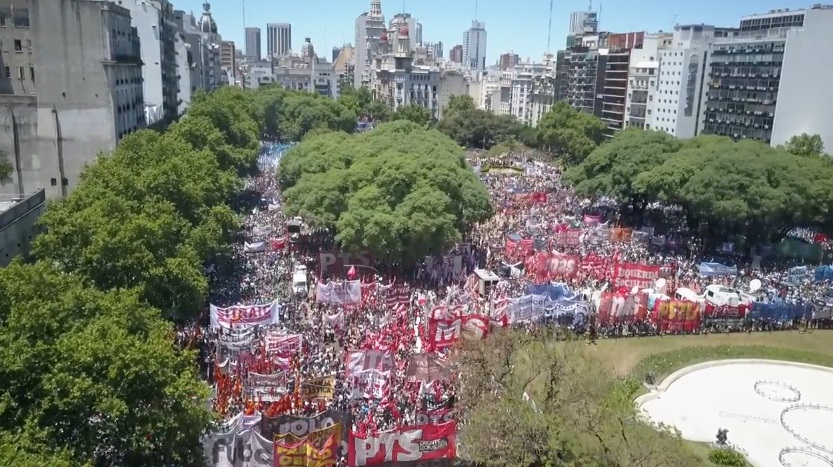
Access ChatPTS here.
Macri’s “permanent reformism”: rise and failure
When Mauricio Macri assumed the presidency in 2015, he did so as the candidate of big businessmen, promising a “normalization” of the economy: devaluation, tariff increases, reduction in public spending and closure of debt litigation. The objective was to restore capitalist profitability and advance structural reforms, especially labor and pension reforms. However, from the beginning, the government had to apply a “trial and error” tactic, launching trial balloons and retreating at the first social rejection, to avoid a direct confrontation that would paralyze it. Thus, the Macri administration postponed the most regressive reforms until after the 2017 midterm elections, when, after an important victory in the province of Buenos Aires, Macri announced that a stage of “permanent reformism” was beginning.
The reform package included labor changes (whitening, extension of the hours bank, reduction of employer contributions, new internships, cuts in compensation) and a new fiscal pact with the provinces. But the turning point was the pension reform of December 2017, which sought to limit the increase in retirements and allowances. The government achieved half a sanction in the Senate, but in the Deputies it encountered a massive popular mobilization and confrontations with the repressive forces. The session had to adjourn on December 14 and, when it was finally approved on the 18th, it was in the midst of even harsher repression. The union bureaucracy boycotted the possibility of a national strike, but the anger overflowed into the leadership and was expressed in the streets.
This was the “hell so feared” for Macri: the attempt to fully advance the reform agenda aroused popular rejection that could not be contained either by the union bureaucracy or by the co-opted social movements. Until that moment, the Macrismo had tested how far it could advance and retreated if it saw resistance. But in December 2017, the popular resistance was such that it buried the reformist impetus and marked the beginning of the government’s decline.
The end of the macrista cycle and the lessons for today
The failure of Macri’s “permanent reformism” was not only due to economic miscalculations or the lack of a crisis that provided social discipline, but to the combination of an adjustment policy that deepened social deterioration and the capacity for resistance of the working class and popular sectors. The 2018 crisis, with the exchange rate run and the return to the IMF, ended up sealing the disenchantment even among the business sectors that had bet on Macrism. The structural reform plan was truncated, and Macri ended his mandate mired in discredit and economic crisis.
The experience left several central lessons:
Milei and the reform agenda: how to confront it
Today Milei, after the October 26 elections, is trying to resume and deepen the agenda of structural reforms that Macri was unable to complete: fiscal adjustment, labor and pension reforms, privatizations, delivery of resources and alignment with the IMF and international capital.
The main conclusion to face the Milei reforms is that only organization from below, mobilization and unity of action can put a real brake on adjustment. Experience shows that you cannot trust the bureaucratic union leaderships or the political variants that seek to “moderate” the adjustment or negotiate crumbs. A national struggle plan is needed, democratically developed in assemblies, that unifies the workers, the youth and the popular sectors, and that points to a fundamental solution: break with the IMF, ignore the illegitimate debt and put the resources at the service of the majorities.
Recent history shows that popular resistance can defeat adjustment plans, but for this victory to be lasting and open a favorable solution for the majority, it is necessary to build a political alternative of the working class, with an anti-capitalist and socialist program, which disputes power with the parties of adjustment and dependency.
And you, what would you ask ChatPTS? Go here and ask your questions. You can also investigate thousands of other topics of history, theory or politics.
Source: www.laizquierdadiario.com

